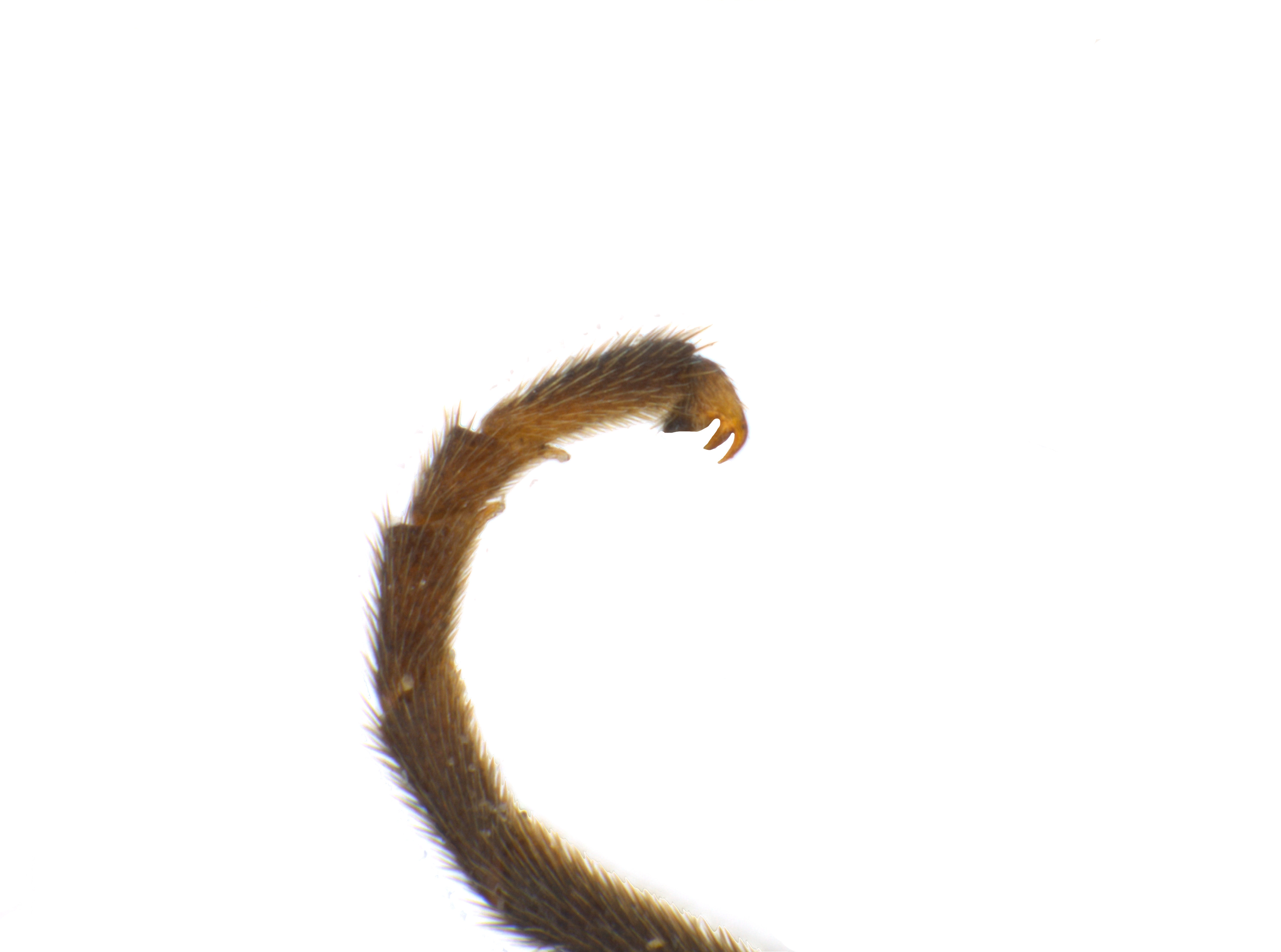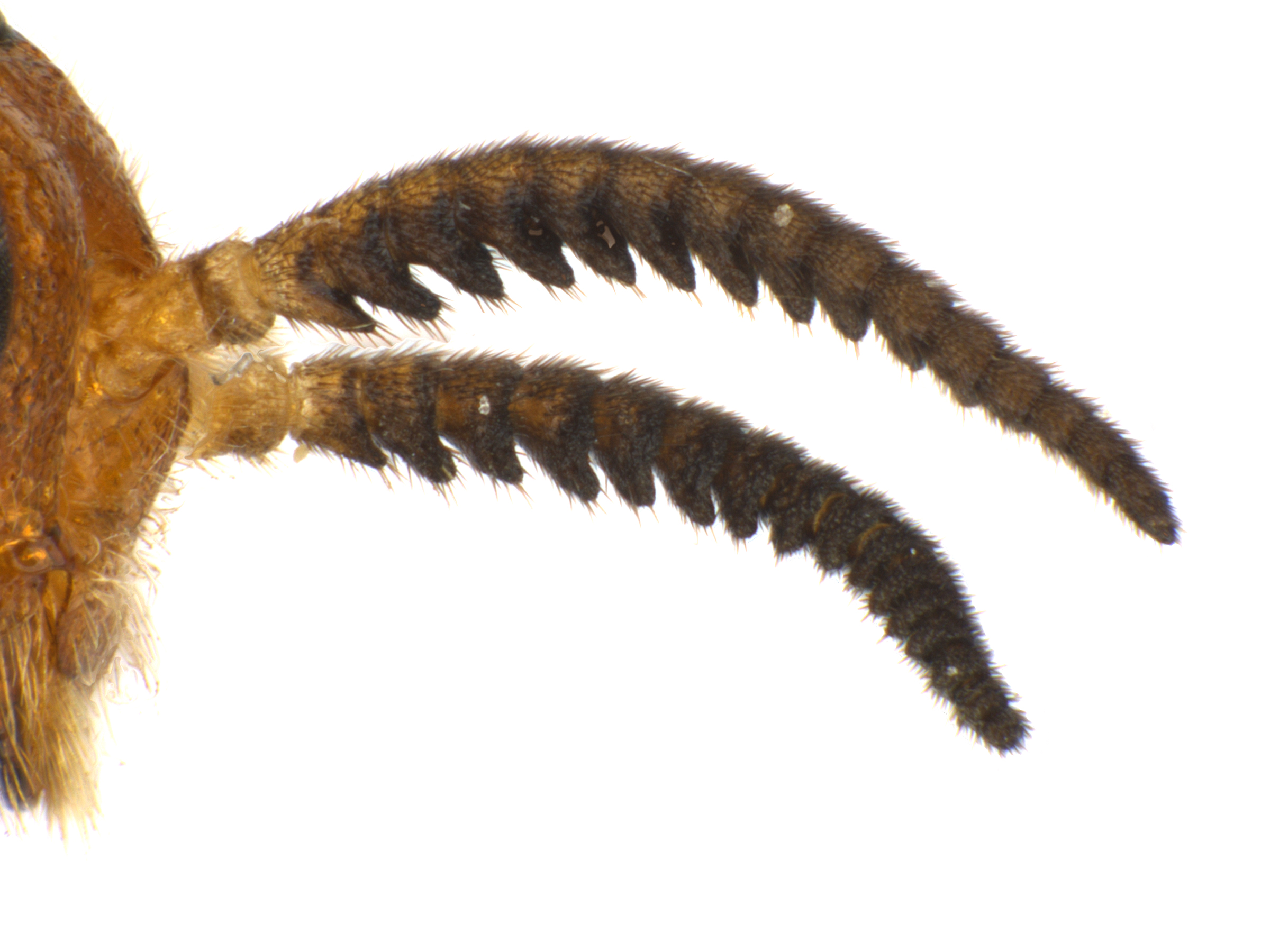Family: Tenthredinidae
Family common name: common sawflies
Subfamily: Blennocampinae
Tribe: Phymatocerini
Genus: Ceratulus MacGillivray, 1908
Subgenera: none
The Tenthredinidae are the most species-rich family and are found throughout the world, in all continents but Antarctica. They are known as the “common sawflies.” They can generally be recognized by a cylindrical body and long, segmented antennaeantenna:
the sensory organ emerging from the front of the head, usually between the compound eyes and above the clypeus; includes the flagellum, scape and pedicel
 . Otherwise, they come in a variety of colors, sizes, and forms (Goulet 1992Goulet 1992:
. Otherwise, they come in a variety of colors, sizes, and forms (Goulet 1992Goulet 1992:
Goulet H. 1992. The genera and subgenera of the sawflies of Canada and Alaska: Hymenoptera. Symphyta. The insects and arachnids of Canada. Part 20. Agriculture Canada Publication.).
Sawflies in the subfamily Blennocampinae have a diverse set of life histories and habits. Many species are restricted to subtropical and tropical regions, but the genus is still fairly species-rich in North America. Blennocampinae includes many sawflies that feed on ornamental and forestry crops. This subfamily can be recognized by wing venationvenation:
the network of veins on a wing
and bidentatebidentate:
having two teeth; often used in descrbing mandibles or tarsal claws
 mandibles (Smith 1969dSmith 1969d:
mandibles (Smith 1969dSmith 1969d:
Smith DR. 1969d. Nearctic Sawflies. I. Blennocampinae: Adults and larvae (Hymenoptera: Tenthredinidae). Technical Bulletin, U.S. Department of Agriculture 1397: 1-176.).
Ceratulus is monotypicmonotypic:
describes having only one representative; ex. a genus that includes only one species
. Ceratulus spectabilis is relatively large for its subfamily, about 7–9 mm in length, and entirely orange with black striping on the legs, darkened wings, and distinctly serrateserrate:
toothed; often describing the ovipositor saw or antennae
 antennaeantenna:
antennaeantenna:
the sensory organ emerging from the front of the head, usually between the compound eyes and above the clypeus; includes the flagellum, scape and pedicel
 (MacGillivray 1908MacGillivray 1908:
(MacGillivray 1908MacGillivray 1908:
MacGillivray AD. 1908. A new genus and species of Blennocampinae from Texas. The Canadian Entomologist 40 (12): 454-455., Smith 1969dSmith 1969d:
Smith DR. 1969d. Nearctic Sawflies. I. Blennocampinae: Adults and larvae (Hymenoptera: Tenthredinidae). Technical Bulletin, U.S. Department of Agriculture 1397: 1-176.).
There is a single described extantextant:
in existence; opposite of extinct
species worldwide, and it occurs in North America (Taeger et al. 2018Taeger et al. 2018:
Taeger A, Liston AD, Prous M, Groll EK, Gehroldt T, and Blank SM. 2018. ECatSymmdash;Electronic World Catalog of Symphyta (Insecta, Hymenoptera). Program version 5.0 (19 Dec 2018), data version 40 (23 Sep 2018). Senckenberg Deutsches Entomologisches Institut (SDEI), Muuml;ncheberg. https://sdei.de/ecatsym/ Accessed: 28 Jan 2020.).
Subfamily characters
 veins Cu1 and 1m-cu between 120°–150° (Goulet 1992Goulet 1992:
veins Cu1 and 1m-cu between 120°–150° (Goulet 1992Goulet 1992: veins M and 1m-cu parallel (Smith 1969dSmith 1969d:
veins M and 1m-cu parallel (Smith 1969dSmith 1969d: veins 2A and 3A incomplete (Smith 1969dSmith 1969d:
veins 2A and 3A incomplete (Smith 1969dSmith 1969d:Genus characters
 2X as long as wide (Smith 1969dSmith 1969d:
2X as long as wide (Smith 1969dSmith 1969d: serrate (MacGillivray 1908MacGillivray 1908:
serrate (MacGillivray 1908MacGillivray 1908: veins 2A and 3A straight at apexapex:
veins 2A and 3A straight at apexapex: cellcell:
cellcell: M present (Smith 1969dSmith 1969d:
M present (Smith 1969dSmith 1969d: bifidbifid:
bifidbifid: (Smith 1969aSmith 1969a:
(Smith 1969aSmith 1969a: basalbasal:
basalbasal:Ceratulus spectabilis can be distinguished from other genera in the subfamily Blennocampinae by the distinctively serrateserrate:
toothed; often describing the ovipositor saw or antennae
 antennaeantenna:
antennaeantenna:
the sensory organ emerging from the front of the head, usually between the compound eyes and above the clypeus; includes the flagellum, scape and pedicel
 and restricted range (Smith 1969dSmith 1969d:
and restricted range (Smith 1969dSmith 1969d:
Smith DR. 1969d. Nearctic Sawflies. I. Blennocampinae: Adults and larvae (Hymenoptera: Tenthredinidae). Technical Bulletin, U.S. Department of Agriculture 1397: 1-176.).
none
Ceratulus spectabilis feeds on Cissus trifoliata (sorrelvine) (Smith 1969dSmith 1969d:
Smith DR. 1969d. Nearctic Sawflies. I. Blennocampinae: Adults and larvae (Hymenoptera: Tenthredinidae). Technical Bulletin, U.S. Department of Agriculture 1397: 1-176.).
unknown
World: This genus is found only in North America (Taeger et al. 2010Taeger et al. 2010:
Taeger A, Blank SM, and Liston AD. 2010. World Catalog of Symphyta (Hymenoptera). Zootaxa 2580: 1-1064.).
North America: Ceratulus spectabilis is known only from Texas (Smith 1969dSmith 1969d:
Smith DR. 1969d. Nearctic Sawflies. I. Blennocampinae: Adults and larvae (Hymenoptera: Tenthredinidae). Technical Bulletin, U.S. Department of Agriculture 1397: 1-176.).
Map data from: GBIF.org (29 October 2019) GBIF Occurrence Download Ceratulus
Details about data used for maps can be found here.